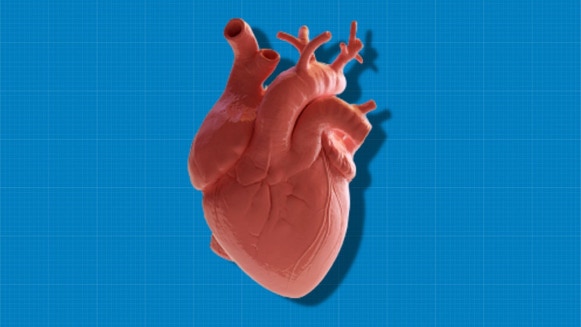





Video Explains Why Orbital Resonance Is a Thing in a Relatable Way
The three largest moons of Jupiter, Ganymede, Europa and Io have orbital periods that are whole number ratios with each other. Find out why.
ByLoukia Papadopoulos
Apr 10, 2021
The workings of the stars, the planets, and the moons are hard for most of us to grasp but here in this video YouTuber Steve Mould explains one particular concept related to space, orbital resonance, in a way that can finally be understood.
"Incredibly, the three largest moons ofJupiter, Ganymede, Europa, and Io have orbital periods that arewhole number ratios with each other(1:2:4). The big gap in Saturn's rings is caused by a moon much further out that has an orbital period double that of the gap! We've even found exoplanet systems with these patterns. They're all the result of orbital resonance. This video explains how that mechanism works," Mould writes in his video description.
The video first illustrates how there is no orbital resonance when it comes to the ratios of planets circling the sun. It seems that orbital resonance is a concept that's exclusive to moon-related phenomena.
Mould then goes on to explain the concept by using an illustration that features the moon and a rock inSaturn's rings. We can tell Mould is up to date with popular culture as he designates this rock with a picture of famous actor/wrestler The Rock. But what's most impressive is how simply and clearly, he explains orbital resonance using this example. Watch the video and see for yourselves.
World's First Triple-Drop Delivery Drone Takes Off
Additionally, ten Wingcopter 198s can be remotely controlled by just one operator from
anywhere in the world.
In just one flight, a Wingcopter 198 drone can deliver up to three packages to different locations. This, Wingcopter, the German company behind the drone said, is the world's first fully electric, eVTOL, fixed-wing drone capable of such a feat.
Announcing its new Wingcopter drone generation yesterday, April 27, in a press release the company's CEO Tom Plümmer said "The Wingcopter 198is a game-changer for drone-based deliveries, ready to create logistical highways in the sky. It can be perfectly utilized as a fleet solution in delivery networks to create new opportunities, everywhere."
The Wingcopter 198's specs
The new drone can carry payloads of up to 13 pounds (6 kg) with just one battery charge over a span of 47 miles (75 km), or up to 68 miles (110 km) with a lighter payload. The company explains the drone is especially ideal for hard-to-reach or remote areas like islands, offshore platforms, or mountainous regions as it's capable of handling challenging weather as well.
As the Wingcopter 198 is capable of reaching speeds of up to 93 mph (150 km/h), it's especially handy for express deliveries.
On top of all that, its triple-drop system uses a winch mechanism that allows for precise drop-offs at multiple locations per flight. Alternatively, it can also carry just two payloads, or one heavier one dependent on size and shape. All of the deliveries are carried out automatically, and just one remote operator located anywhere in the world can control up to 10 drones in one go.
The drone is currently undergoing FAA type certification in the U.S., and is designed and developed in accordance with aviation safety standards and guidelines — something Wingcopter is known for, and that attractedUPS to partner with the companylast year to deliver multipurpose drones.
Wingcopter 198 is described by the company's CTO, Jonathan Hesselbarth, as "[...] what we believe to be the most advanced, versatile and efficient delivery drone solution in its category."
Wingcopter is alreadyaccepting ordersfor its first 100 Wingcopter 198 drones, which will certainly be snapped up in no time.
Competition is neck to neck in eVTOL drone development, with the likes offully automated delivery drones, and drones thatdeliver packages in mere minutes. It's easy to understand why this technology is taking off, and Wingcopter is right up there next to all the others.
SCIENCE
Lab-Grown Mini-Heart Beats like a 25-Day-Old Human Embryo's Heart
The scientists were able to create heart organoids whose cells self-organize like those in an embryo.
A team of researchers has developed the first human "mini-hearts" in the lab to have clearly beating chambers. The miniature organs, or organoids, are no bigger than sesame seeds and were generated by self-assembly using pluripotent stem cells, according to Science Magazine.
The organoids mimic the functioning heart of a 25-day-old human embryo, and they may help humans solve the heart's many mysteries.
The heart of the matter
Nothing is as essential and universal as the heart; however, there is still a lot about it that science is yet to uncover. Our capability to model the complexity of the human heart in vitro is still limited, consequently limiting our knowledge of how heart diseases develop.
Congenital heart defects, for example, are the most common birth condition in humans, affecting around 1 percent of all live births. This alone demonstrates the need to create more precise organ-like platforms, which is where the researchers come in, with their newly devised method which was described in a study published in the journal Cell.
The researchers engineered human pluripotent stem cells, which can divide into any kind of tissue, into multiple forms of cardiac cells to create heart organoids whose cells self-organize like those in an embryo. The aim was to create three tissue layers that make up a heart chamber's walls, which are one of the first parts of the heart to form.
The organoids, which are around 2 mm in diameter and have survived more than 3 months in the lab so far, become structurally equal to the heart of a 25-year-old embryo in a week. They only have one chamber and the main types of cells at this point of development. Moreover, the heart's clearly defined chamber beats 60 to 100 times a minute, much like the heart of an embryo at the same age.
“When I saw it the first time, I was amazed that these chambers could form on their own,” said lead author Sasha Mendjan, a stem cell biologist at the Institute of Molecular Biotechnology at the Austrian Academy of Sciences, to Science Magazine. “The amazing thing is that you see immediately whether the experiment worked and the organoid is functional since it beats—unlike other organs.”
Although the idea of a fully functioning artificial heart seems far off, for now, the researcher will most likely focus on connecting beating heart organoids to vascular networks and testing whether they can pump blood. Nonetheless, these mini-hearts hold immense potential since they could constitute a powerful novel tool for our experiments on understanding human cardiac development and disease, which have largely relied on animal models.

